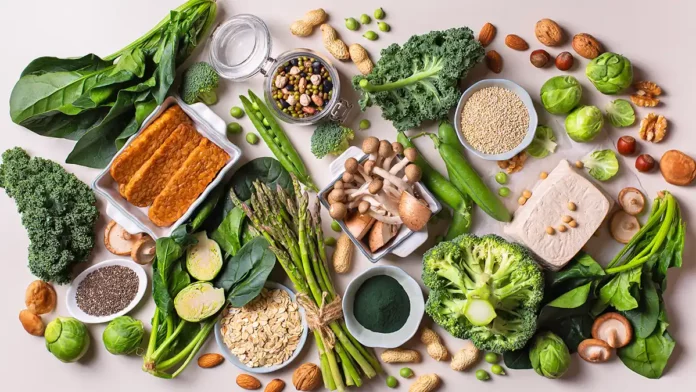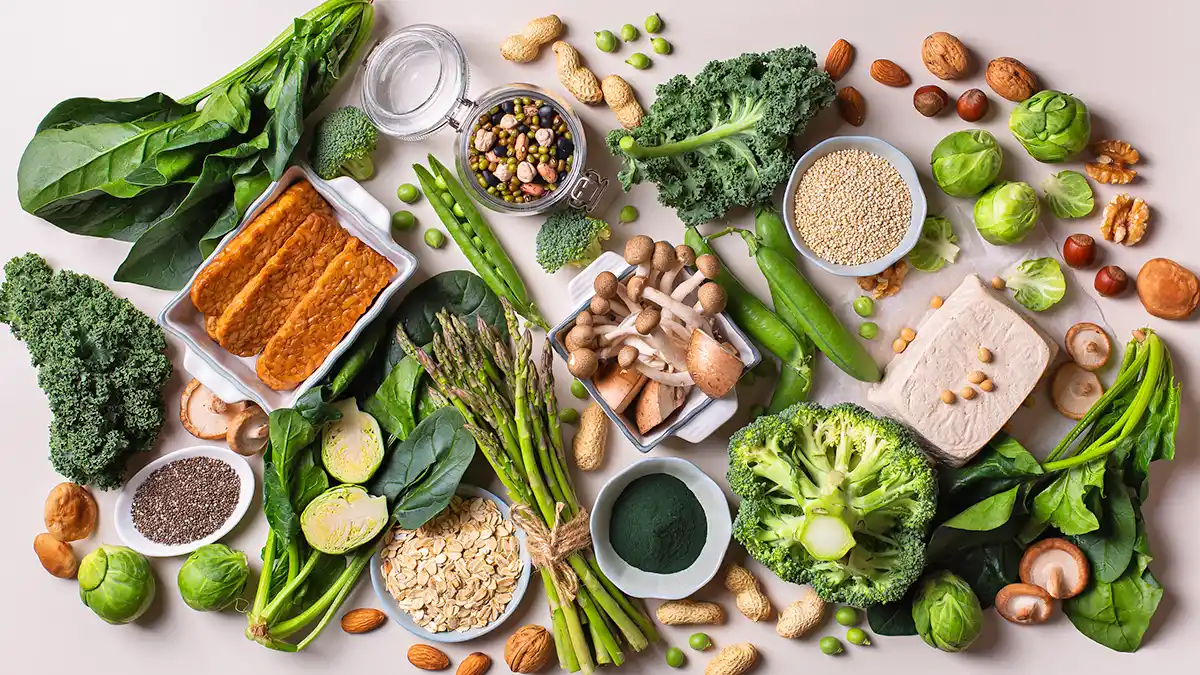
Why are plant-based diets a growing trend, and what should you do to keep up?
Article contributed by Joy Pouros, Culinary Software Services
From fast food to high end restaurants, you’ve undoubtedly noticed a boon of plant-based proteins in the past few years. Will it last, or is plant-based just the latest in a long line of fad diets?
If it’s here to stay, what do restaurants need to know before adding alternative proteins to their menu?
To understand alternative proteins, we need to look at what is driving the individuals following a plant-based diet and how it’s changed over the years.
Table of Contents
Explore the Past, Embrace the Present, Shape the Future
Plant-based diets have been around for much longer than there have been restaurants and grocery stores. Historically, it’s been out of necessity or lack of access to meat.
More recently it’s often been considered an alternative diet, limited to those with religious restrictions or as an act of principle.
Now, it’s become more mainstream. The increased demand for plant-based protein options has spurred innovations that have only recently become widely available.
New plant-based protein options solved a longstanding problem; people following a vegetarian or vegan diet often struggled to get enough protein. Beans and tofu were stereotypically considered unappealing choices for many people.
Globalization and technology have helped plant-based diets become as popular as they are today. Wide varieties of foods are now accessible to consumers thousands of miles from their origin. This has also expanded consumers’ palettes to new flavors and dishes.
Technology has further evolved plant-based options to include meat lookalikes.
We haven’t invented more plants to eat, but we’ve dramatically changed how they are processed and prepared, leading to vegetarian options that are high in protein and remind us of foods we’re familiar with.
The result is a booming plant-based protein industry.
By the Numbers: The Growth and Potential of the Plant-Based Market
There are conflicting figures regarding the number of individuals who follow a plant-based diet. Some of this ambiguity could be because many consumers keep loose definitions of vegetarian or plant-based.
Traditionally, a plant-based diet was vegetarian but not vegan. And people who eat both meat and plants – the majority of people – are, by definition, omnivores.
However, a growing number of people refer to themselves as “flexitarian,” which indicates they try to limit the meat they eat, or they are vegetarian some of the time.
The technicalities of these definitions don’t matter to consumers – perception is reality, and a growing number of people consider themselves part of the plant-based diet community.
That aside, Gallup polls have the percentage of Americans identifying as vegetarian sitting at between 3-5%.
While Americans get two thirds of their protein from animal sources, 50% of Americans are familiar with plant-based meat substitutes and 40% have tried them.

What we can take away from the data is more consumers are becoming comfortable with foregoing meat at meals or trying alternative options.
Many individuals regularly have meat-free meals, evidenced by trends like “Meatless Monday” and by the growing market. The alternative protein market is a multi-billion dollar market poised to grow substantially over the next decade.
As for the price of these plant-based proteins, it’s a matter of scale. They are currently priced higher than their meat counterparts, but the more popular they become the more competitive those prices will be.
And scale could very well be possible as today’s young people grow into a larger buying power block, since the younger generations are showing more signs of eating plant-based diets at least some of the time.
Why Are Plant-Based Proteins Attractive to Consumers?
While some consumers abstain from meat for religious reasons or specific allergies, there are a few main drivers causing people to experiment more with plant-based protein.
Health Benefits
Though people used to assume a vegetarian diet was nutritionally deficient, more recently a vegetarian diet has been touted as a healthy choice.
This isn’t always the case – It’s perfectly possible to be vegetarian and subsist on a diet of sugary drinks and junk food. However, there’s some truth to those health claims.
Vegetarians tend to weigh less than their meat-eating counterparts, and their diets tend to be lower in calories and include lower levels of saturated fats and cholesterol.
Some studies have suggested vegetarians have lower cancer rates and are less likely to die of certain heart diseases. They have lower risk of chronic disease and diabetes, and their diets contain more fiber, potassium, and some vitamins.
These numerous health benefits are very compelling to individuals trying to improve their lifestyle.
Consumers are more informed than ever before and have access to recipes and health and nutrition tips, like the current emphasis on gut health and macronutrients.
Despite the transient popularity of extreme and restrictive diets, there is a discernible shift towards moderation, reflecting an evolving mindset. All these trends complement a plant-based diet.
Ethical and Environmental Concerns
Some individuals disagree with the treatment of animals. People with these concerns may limit their meat intake, be vegetarian, or they could follow a vegan diet.
Plant-based dishes imply they are free of meat, but not necessarily animal byproduct. It’s an important distinction to make, as the different consumers who enjoy plant-based dishes have very different requirements as to what that means to them.
Other people are concerned about the toll meat consumption takes on the environment. It takes substantially more water to produce one pound of beef than it does a pound of wheat.
Raising animals for consumption produces excessive amounts of carbon dioxide, methane, and nitrous oxide. Livestock contributes to water pollution and the reduction of wildlife habitats.
According to some studies the single most impactful action an individual can take to fight global warming is to adopt a vegetarian or vegan diet.
While that may be true on paper, to get the full environmental benefit of cutting meat out of their diet, an individual would need to limit their food consumption to locally sourced items.
While they may experience cost savings with the change, they’d need to ensure those saved dollars were not reallocated to consumer goods that have their own carbon footprint.
At the end of the day, even if there are flaws in some of the reasoning, these concerns are what is driving people to change their diets.
How the Food Service Industry Can Respond
There’s little downside to offering plant-based protein options. The general population is becoming more open to those options, and individuals who follow a plant-based diet will patronize places with stronger options than a salad for dinner.
If you are looking to add this to your menu, restaurant owners should keep the following in mind.
Transparency and Clarity
Everyone wants to know what they are eating, but plant-based options can easily become confusing.
This happens both because people are less familiar with them and because it’s easy for consumers to make assumptions based on how alternative options are named or described.
Burger King was met with trouble with their Impossible options – though the “Impossible” was a plant-based alternative to the burger patty, they were still cooked on the same broilers as meat products, which made consumers feel misled.
Appropriately label whether your food items meet vegetarian or vegan definitions, since the presence of plant-based protein may lead to consumers making assumptions about the entire dish.
This also entails information about any sauces or accoutrement included with the dish. Just because some consumers are not strictly practicing, you must assume some are.
Don’t Stray Too Far From Current Offerings
If you serve homestyle fare, a new menu item featuring grains and vegetables your customers have never heard of might not be the right move.
Instead, strategically integrate these options within your existing menu to make the option less daunting to your regular guests.
For example, offer a plant-based burger alongside your traditional ones, or incorporate tofu or tempeh as protein alternatives in popular dishes like salads, stir-fries, or wraps.
Similarly, you don’t need an entire new menu section. Incorporate plant-based protein options with the rest of your menu.
By presenting these options alongside familiar choices, you make it easier for customers to explore plant-based alternatives without feeling overwhelmed by a separate section dedicated to them.
The Future Starts Now
Plant-based diets are nothing new, but the increase in plant-based and alternative protein options reflects a combination of current consumer preferences and a willingness to try new things.
While plant-based protein may never surpass meat, it’s not a fad that is going to fade any time soon.
Business owners don’t need to redesign their full menus to accommodate this trend, and the effort is likely to be well worth it.
By incorporating plant-based options within existing menus, the food service industry can not only meet the evolving demands of consumers but also contribute to a sustainable and inclusive culinary landscape.
Joy Pouros works as the authority writer in the Training department at Culinary Software Services, where she writes on topics as diverse as human resource issues to increasing profits.
Joy entered the industry working as a Nutritional Aide in the Chicagoland area before moving into writing and consulting.
Joy now specializes in marketing and public relations and writes for a variety of industries.























